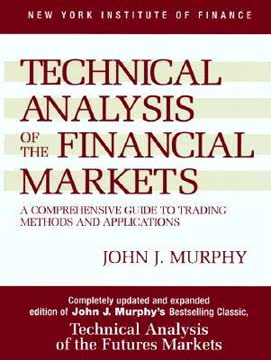Key Takeaways
1. Ichimoku: A One-Glance Equilibrium Chart
Ichimoku Kinko Hyu, commonly referred to as Ichimoku, is one of the best systems available for trading the markets.
All-in-one indicator. The Ichimoku system, a Japanese innovation, is designed to provide a comprehensive view of market sentiment at a glance. It works across various asset classes, including stocks, commodities, currencies, and bonds, and is effective on all time frames, from weekly to one-minute charts.
Visual sentiment. The system's core lies in its ability to visually depict market equilibrium and potential trend direction. By understanding the components of the Ichimoku cloud, traders can quickly assess whether a chart is bullish or bearish, identify support and resistance levels, and gauge momentum.
No need for other indicators. The Ichimoku system aims to be self-sufficient, reducing the need for additional indicators or oscillators. This simplifies the trading process and helps traders avoid the paralysis of choosing between numerous conflicting signals. The system is built around three key numbers: 9, 26, and 52, representing different periods of price equilibrium.
2. Decoding the Ichimoku Components
The Ichimoku system has five components to it: Tenkan; Kijun; Senkou A; Senkou B; and Chikou.
Five key components. The Ichimoku system comprises five essential components: Tenkan (Conversion Line), Kijun (Base Line), Senkou A (Leading Span A), Senkou B (Leading Span B), and Chikou (Lagging Span). Each component provides unique insights into price action and market dynamics.
- Tenkan: Short-term equilibrium, calculated as the average of the highest high and lowest low over the past nine periods.
- Kijun: Medium-term trend container, calculated similarly over the past 26 periods.
- Senkou A: (Tenkan + Kijun) / 2, plotted 26 periods into the future.
- Senkou B: (Highest high + Lowest low of the past 52 periods) / 2, plotted 26 periods into the future.
- Chikou: Current price shifted back 26 periods.
Kumo cloud. Senkou A and Senkou B form the Kumo cloud, which acts as a dynamic support and resistance zone. Understanding these components and their interactions is crucial for effective Ichimoku trading. The Chikou Span acts as a momentum indicator, reflecting the current price action relative to the past.
3. Mastering the Ichimoku Trading System
A system will ensure the trader that all aspects of Ichimoku are working in harmony with each other.
Rule-based strategies. Integrating the Ichimoku components into a structured trading system is essential for consistent and profitable trading. A well-defined system ensures that all aspects of Ichimoku are working in harmony, providing clear entry and exit signals.
Five common strategies:
- Tenkan/Kijun Cross
- Kumo Breakout
- Kijun Cross
- Chikou Breakout
- Kumo Twist
Harmony is key. Regardless of the chosen strategy, it's crucial to review all Ichimoku components for bullish or bearish indications before initiating a trade. Conflicting signals can reduce the probability of success. Individual traders should tailor their strategies to their unique personalities and risk tolerance.
4. Kumo Break Strategy: Riding the Cloud
Long positions are initiated when price breaks, and closes, above the Kumo.
Breakout confirmation. The Kumo Break strategy involves initiating long positions when the price breaks and closes above the Kumo cloud, and short positions when the price breaks and closes below the Kumo. This strategy leverages the Kumo cloud as a key support and resistance zone.
Rules for success:
- Price vs. Kumo: Price must close above (long) or below (short) the Kumo.
- Future Kumo: The future Kumo should align with the trade direction (bullish for long, bearish for short).
- Chikou: The Chikou Span should be free and clear of immediate price congestion.
- Tenkan/Kijun: Tenkan should be above Kijun for long positions and below for short positions.
Stop loss and exit. The initial stop loss is typically set below the Kijun for long positions and above the Kijun for short positions. As the trade progresses, the stop loss can be trailed with the Kijun. Partial profits should be taken along the way, and the final position exited when the price closes below (long) or above (short) the Kijun.
5. Tenkan/Kijun Cross: Spotting Key Reversals
Long positions are initiated when the Tenkan crosses the Kijun to the upside.
Reversal signals. The Tenkan/Kijun (T/K) Cross strategy involves initiating long positions when the Tenkan crosses above the Kijun, and short positions when the Tenkan crosses below the Kijun. This strategy aims to capture potential trend reversals.
Effectiveness depends on location:
- Above Kumo: Strong bullish signal (long) or weak bearish signal (short).
- Below Kumo: Strong bearish signal (short) or weak bullish signal (long).
- Within Kumo: Neutral signal.
Additional rules:
- Future Kumo: Should align with the trade direction.
- Chikou: Should be free and clear of price congestion.
- Price vs. Tenkan/Kijun: Price should be above Tenkan/Kijun for long positions and below for short positions.
6. Trading Any Asset, Anywhere
Ichimoku system can be used for trading any asset on any time frame.
Universal application. The Ichimoku system is versatile and can be applied to any asset class, including stocks, commodities, currencies, and bonds, across various global markets. The underlying principles of fear and greed, which drive market movements, are universal, making Ichimoku a valuable tool for traders worldwide.
Global opportunities. Traders can leverage Ichimoku to identify trading opportunities in different markets and asset classes, diversifying their portfolios and capitalizing on favorable chart setups. The system's ability to visually depict market sentiment and equilibrium makes it easy to adapt to different market conditions.
Emotional discipline. The Ichimoku system helps traders make decisions based on chart analysis rather than emotional impulses. By following the system's rules and guidelines, traders can avoid panic selling at the bottom and exuberant buying at the top.
7. Ichimoku Trading: Essential Tips
The goal of trading is to make more profits than losses.
Avoid earnings announcements. Fundamental news, such as earnings announcements, can negate technical analysis. It's best to avoid entering trades before such events to prevent unexpected price gaps.
Volume matters. Avoid trading low-volume stocks, as they lack the market memory necessary for technical analysis to be effective. Higher volume charts provide more reliable patterns and support/resistance levels.
Time pullbacks. Time entries after pullbacks in a trend, using the Tenkan and Kijun as support (uptrend) or resistance (downtrend). This can provide better entry points and reduce risk.
Last updated:
Review Summary
How to Make Money Trading the Ichimoku System receives mostly positive reviews, with readers praising its comprehensive explanation of the Ichimoku trading system. Many find the numerous chart examples helpful, though some consider them repetitive. Readers appreciate the author's honesty in showing both profitable and losing trades. The book is recommended for beginners and intermediate traders, with some suggesting it lacks advanced strategies. Critics note the absence of long-term statistical data on the system's effectiveness. Overall, readers find the book valuable for understanding and implementing the Ichimoku system in their trading.
Similar Books










Download PDF
Download EPUB
.epub digital book format is ideal for reading ebooks on phones, tablets, and e-readers.




